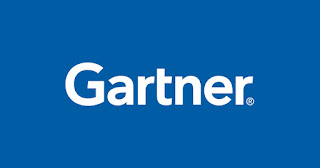When employees at an industrial site returned to the workplace after it was closed during the COVID-19 pandemic, they noticed a few differences. Sensors or RFID tags were used to determine whether employees were washing their hands regularly. Computer vision determined if employees were complying with mask protocol and speakers were used to warn people of protocol violations. What’s more, this behavioral data was collected and analyzed by the organizations to influence how people behaved at work.
Download eBook: Top Strategic Technology Trends for 2021
The collection and use of such data to drive behaviors is called the Internet of Behavior (IoB). As organizations improve not only the amount of data they capture, but also how they combine data from different sources and use that data, the IoB will continue to affect how organizations interact with people.
The IoB is one of Gartner’s nine strategic technology trends that will enable the plasticity or flexibility that resilient businesses require in the significant upheaval driven by COVID-19 and the current economic state of the world.
The IoB is about using data to change behaviors
“The unprecedented socioeconomic challenges of 2020 demand the organizational plasticity to transform and compose the future,” said Brian Burke, Research Vice President, during virtual Gartner IT Symposium/Xpo™ 2020.
This year’s trends fall under three themes: People centricity, location independence and resilient delivery.
People centricity: Although the pandemic changed how many people work and interact with organizations, people are still at the center of all business. And they need digitaliized processes to function in today’s environment.
Location independence: COVID-19 has shifted where employees, customers, suppliers and organizational ecosystems physically exist. Location independence requires a technology shift to support this new version of business.
Resilient delivery: Whether a pandemic or a recession, volatility exists in the world. Organizations that are prepared to pivot and adapt will weather all types of disruptions.
As always, these nine strategic technology trends do not operate independently of each other, but rather build on and reinforce each other. Combinatorial innovation is an overarching theme for these trends. Together they enable organizational plasticity that will help guide organizations in the next five to 10 years.
Trend 1: Internet of Behaviors
As demonstrated by the COVID-19 protocol monitoring example, the IoB is about using data to change behaviors. With an increase in technologies that gather the “digital dust” of daily life — data that spans the digital and physical worlds — that information can be used to influence behaviors through feedback loops.
For example, for commercial vehicles, telematics can monitor driving behaviors, from sudden braking to aggressive turns. Companies can then use that data to improve driver performance, routing and safety.
IoB does have ethical and societal implications depending on the goals and outcomes of individual uses
The IoB can gather, combine and process data from many sources including: Commercial customer data; citizen data processed by public-sector and government agencies; social media; public domain deployments of facial recognition; and location tracking. The increasing sophistication of the technology that processes this data has enabled this trend to grow.
IoB does have ethical and societal implications depending on the goals and outcomes of individual uses. The same wearables that health insurance companies use to track physical activities to reduce premiums could also be used to monitor grocery purchases; too many unhealthy items could increase premiums. Privacy laws, which vary from region to region, will greatly impact the adoption and scale of the IoB.
Become a client: Learn how Gartner can help you achieve your mission-critical priorities.
Trend 2: Total experience
Total experience combines multiexperience, customer experience, employee experience and user experience to transform the business outcome. The goal is to improve the overall experience where all of these pieces intersect, from technology to employees to customers and users.
This trend enables organizations to capitalize on COVID-19 disruptors
Tightly linking all of these experiences — as opposed to individually improving each one in a silo — differentiates a business from competitors in a way that is difficult to replicate, creating sustainable competitive advantage. This trend enables organizations to capitalize on COVID-19 disruptors including remote work, mobile, virtual and distributed customers.
For example, one telecommunications company transformed its entire customer experience in an effort to improve safety and satisfaction. First, it deployed an appointment system via an existing app. When customers arrived for their appointment and came within 75 feet of the store, they received two things: 1) A notification to guide them through the check-in process and 2) an alert letting them know how long it would be before they could safely enter the store and maintain social distance.
The company also adjusted its service to include more digital kiosks and enabled employees to use their own tablets to co-browse customers’ devices without having to physically touch the hardware. The result was a safer, more seamless and integrated overall experience for customers and employees.
Trend 3: Privacy-enhancing computation
Privacy-enhancing computation features three technologies that protect data while it’s being used. The first provides a trusted environment in which sensitive data can be processed or analyzed. The second performs processing and analytics in a decentralized manner. The third encrypts data and algorithms before processing or analytics.
This trend enables organizations to collaborate on research securely across regions and with competitors without sacrificing confidentiality. This approach is designed specifically for the increasing need to share data while maintaining privacy or security.











